
Understanding Workplace Risk Management
Risk Tolerance – It’s about time we gave this some more thought, or How to create a Black Swan

Risk tolerance by its very nature is one of the most disquieting concepts in our world of safety. The reason I say this is because it is just so natural. In almost all things that we do, if not all, it is there.
At this point it is worth taking a bit of a detour and take a look at what Dave Fennel has to say about Risk Tolerance – just click here.
I had never really given Risk Tolerance a great deal of thought until I was nearly killed in a cycling accident, and had to begin to think about all the why’s and wherefore’s that contributed to that event.
Whilst I have revisited the actual incident many times, and consider that my own contribution at the time of impact was quite minimal; there can be no doubt that actions and decisions throughout the accident causation sequence involve a number of sub-optimal decisions being made my myself. The more I have pondered on those sorts of questions, the more I am confronted with the phrase Risk Tolerance.
So allow me to explore Risk Tolerance with you; whilst using the example of my own cycling accident.
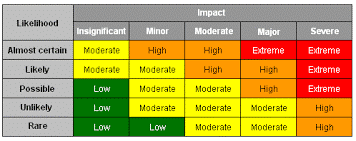 What is the risk associated with riding a bicycle, responsibly to school (I know that can conjure up problems all by itself)? I am going to suggest to you that an accident is probably somewhere around “unlikely”. Some might say “rare”, given the number of kids riding to school each day etc. That’s one of the problems with applying a quasi-statistical measure to this anyway. For the sake of the argument let us accept the “unlikely” position. Now let’s have a look at the Consequences. Someone on the left hand side of the road getting “sideswiped” by a car is probably going to, at the very least, get some bark knocked off. It is not beyond the realm of possibility at all that they may experience multiple fractures, or worse. So when we drop these on the Risk Matrix we find a Medium or High result. Depending on your personal or organizational view there shall be responses to these results, I hope.
What is the risk associated with riding a bicycle, responsibly to school (I know that can conjure up problems all by itself)? I am going to suggest to you that an accident is probably somewhere around “unlikely”. Some might say “rare”, given the number of kids riding to school each day etc. That’s one of the problems with applying a quasi-statistical measure to this anyway. For the sake of the argument let us accept the “unlikely” position. Now let’s have a look at the Consequences. Someone on the left hand side of the road getting “sideswiped” by a car is probably going to, at the very least, get some bark knocked off. It is not beyond the realm of possibility at all that they may experience multiple fractures, or worse. So when we drop these on the Risk Matrix we find a Medium or High result. Depending on your personal or organizational view there shall be responses to these results, I hope.
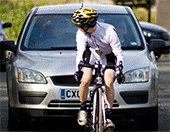 So now I am going to move our bicycle out across in front of the traffic. What we are doing is now placing ourselves amongst the traffic flow – in safety parlance don’t we call this “line of fire”. So let us again consider the same questions. As we increase the level of exposure to the vehicles, it would be fair to suggest that we are also increasing the likelihood of something happening. So if our previous rating here was “unlikely”, we have to at least up the ante to “possible”. Now if the event actually occurs, and we are now amongst traffic, the consequences too we would think are going to have to ramp up a bit. We are now almost certain to experience multiple fractures or death. I am hoping that most of us would consider this to be in the Severe category on our Risk Matrix. We are now looking at “Possible” and “Severe”; which gives us an Extreme risk. It is when we get up here we stop a process, because the risk is unacceptable, don’t we? The process then is to integrate some sort of mitigation process. Now here’s the rub people. Almost every road cyclist I know, including obviously myself, performs that maneuver a significant number of times on every ride we take. Why…? when the possible outcome is so dire?
So now I am going to move our bicycle out across in front of the traffic. What we are doing is now placing ourselves amongst the traffic flow – in safety parlance don’t we call this “line of fire”. So let us again consider the same questions. As we increase the level of exposure to the vehicles, it would be fair to suggest that we are also increasing the likelihood of something happening. So if our previous rating here was “unlikely”, we have to at least up the ante to “possible”. Now if the event actually occurs, and we are now amongst traffic, the consequences too we would think are going to have to ramp up a bit. We are now almost certain to experience multiple fractures or death. I am hoping that most of us would consider this to be in the Severe category on our Risk Matrix. We are now looking at “Possible” and “Severe”; which gives us an Extreme risk. It is when we get up here we stop a process, because the risk is unacceptable, don’t we? The process then is to integrate some sort of mitigation process. Now here’s the rub people. Almost every road cyclist I know, including obviously myself, performs that maneuver a significant number of times on every ride we take. Why…? when the possible outcome is so dire?
This leads me to having to further deconstruct these events. Firstly, let us talk about the construct, Risk Tolerance. Now here we may be in for a bit of a surprise. Just try doing a phrase search on Google for “risk tolerance”. You might be somewhat shocked to see that it’s not about safety at all. We hit about 14, 000,000 pages and they are largely concerned with the world of high finance.
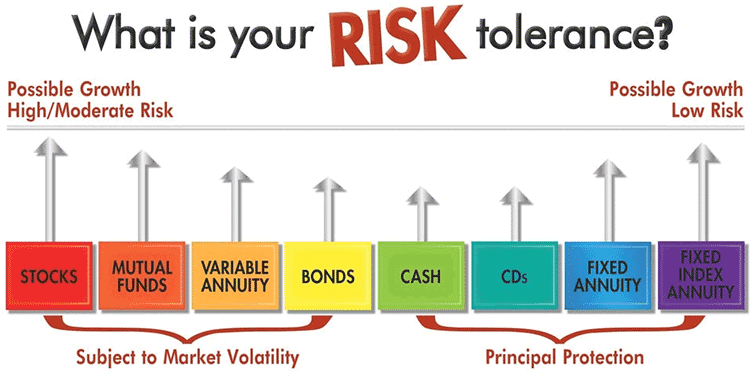 That, in itself, should be sending a shiver down the back of the neck. We can all see how well those guys apply the tenets of risk to their world. All of our communities, particularly our workplaces, as well as our personal superannuation, are bleeding heavily at the moment. Now if we factor into the Google search OH&S as well…. oh boy … do things shrink. About two thousand (2000) – In the Google world that is a “nonsense”. I am sure you can see how the risk tolerance matrix is a “copy” of your garden variety standard risk assessment matrix. Getting a little scared now? You should be.
That, in itself, should be sending a shiver down the back of the neck. We can all see how well those guys apply the tenets of risk to their world. All of our communities, particularly our workplaces, as well as our personal superannuation, are bleeding heavily at the moment. Now if we factor into the Google search OH&S as well…. oh boy … do things shrink. About two thousand (2000) – In the Google world that is a “nonsense”. I am sure you can see how the risk tolerance matrix is a “copy” of your garden variety standard risk assessment matrix. Getting a little scared now? You should be.
Anyway, the idea of “risk tolerance” is roughly about how much uncertainly an investor can handle. There are a whole lot of factors that feed into that scenario and I suggest you hit Google if you want to dig deeper.
I want us to spend some time though considering this issue of “risk tolerance” from a personal safety perspective. My cycling example demonstrates, only too painfully, the outcomes that can occur, through becoming too tolerant of the risks around us. As I have said, those of us in the cycling community tolerate this risk several times, every time we take to the road. Our only protection is a piece of plastic we wear on our head. If I had not worn that little piece of plastic I would be dead!
So where does this “tolerance” come from. I suggest largely from our personal experience. We really do need to remember that, as Safety Professionals, we function within a community that measures its success so much differently than the rest of the World. Our success is measured by the absence of events. That is critical, so allow me to try and say it in a different way.
When something has NOT happened, then we are doing well.

Try watching any sporting event and feeling that something really fantastic has been achieved when there has not been a result. I don’t know about you…. I always feel a bit disappointed when I have watched a game of football and at the end of the 90 minutes we have a draw. In some sports, they even came up with a “golden point” rule; just to make sure “something happened”. In so many other parts of our existence we have come up with all sorts of “rules” to break ties etc.
So when so much “stuff” is not happening, we very quickly become tolerant of all those risks that we “know” are there, but are not happening. After a while we may not even “know” they are there – we now just don’t notice. They have been absent from our experiential frame for so long that they are filed in the “rainy day” category.
Now here’s something a little scary! How do we know what is happening or not happening?
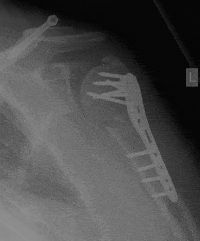 Well yes, there is that thing about our personal experience. I had been riding a pushbike a few thousand K’s for a number of years and never been “hit” before. The fact that I had never been “hit” before, has absolutely nothing to do with the consequences that would occur should the “event” occur. My titanium shoulder tells me that every day!
Well yes, there is that thing about our personal experience. I had been riding a pushbike a few thousand K’s for a number of years and never been “hit” before. The fact that I had never been “hit” before, has absolutely nothing to do with the consequences that would occur should the “event” occur. My titanium shoulder tells me that every day!
We are severely restricted in our ability to make informed decision because of this question of “knowledge”. I have lost count of the number of health professionals at John Hunter Hospital, who when advised what had happened to me, responded with “not another one”. Does that place a whole new emphasis upon our risk matrix exercise earlier? It certainly did for me. We have to be careful though, we don’t want to “jump” the other way. The staff at John Hunter Hospital also have a biased frame of reference do they not – they see the banged up cyclists (or the outcome). They have no real understanding of “frequency” or “likelihood”. Or do they? From their perspective they may confront a number of banged-up cyclists each day within the casualty station – so the confusion continues?
So, not only does the issue of “likelihood” bare no relationship to “outcome”, our ability to make appropriate informed decisions about “likelihood” are significantly compromised. I refer to this as “Inadvertent Ignorance”; make no mistake there is nothing deliberate about this! The consequences though I shall carry for all time.
 Allow me to take this position a few steps further……Where does our knowledge about “likelihood” come from. I have already suggested a large measure comes from this whole area of “personal experience”. It also comes from, by the way, other sources. Again, cyclists chat amongst themselves. I have people pedal past my house, who I don’t know, and wave. Maybe their seeming knowledge of my impact, impacts their knowledge to some degree, and just maybe one or two may modify their own behavior due to what they know about me. I believe not, though. They are too often being reinforced by all that “stuff”; not happening. That is the more immediate reward. Here we might be thinking about some of the behavioural psychology literature about the impacts of immediate verses delayed rewards.
Allow me to take this position a few steps further……Where does our knowledge about “likelihood” come from. I have already suggested a large measure comes from this whole area of “personal experience”. It also comes from, by the way, other sources. Again, cyclists chat amongst themselves. I have people pedal past my house, who I don’t know, and wave. Maybe their seeming knowledge of my impact, impacts their knowledge to some degree, and just maybe one or two may modify their own behavior due to what they know about me. I believe not, though. They are too often being reinforced by all that “stuff”; not happening. That is the more immediate reward. Here we might be thinking about some of the behavioural psychology literature about the impacts of immediate verses delayed rewards.
Remember, when we get home in one piece, we do NOT see the absence of a system failure as a reward. The reward is we just did 87 k’s at an average speed of 34 km/h with our heart rate in the aerobic zone for 80% of the time. If we are really keen, we shall also take note of the cadence as well. Those are the “rewards”; those are the “outcomes”. We do not even give a scintilla of thought to the “what might have been’s”. For a more thorough analysis of some of this “stuff” send me an e-mail request and I shall forward the relevant documents to you.
We also develop this “knowledge”, most unfortunately, from the media. Now that should scare us more than anything. Anybody who truly believes that the media provides unbiased reporting of news events etc. has been living in a different world than I. Whether a “story” even makes the News is an issue. There are so many factors that impact this outcome as well. A couple of examples. Recently a young man of twenty-eight was killed when he was buried alive in East Maitland, NSW (Australia). He was apparently plastering the sides of a four-meter hole which was to be used for horses to swim in – a plunge pool I understand. Hole collapses, he dies. I am not going to go near all the breaches that might exist around the failure to comply with trenching procedures etc. within that process. Others shall pursue that course I am sure. What I am going to say, is that of the four (4) news networks that transmit into that area, only one even referenced this terrible fatality. If you had been watching the other three (3) you have no idea. No knowledge! Without knowledge there can be no “understanding”. Without “understanding” there can certainly be no “decision making” – optimal or otherwise.
I often reflect on the past issues around Swine Flu. How many days did it take to stop being the lead news story? Do you even remember? What about the Networks who showed images of people wearing face masks as a barrier to being infected by Swine Flu? We could argue the pros and cons of that approach I am sure. My point is that much of that footage was a couple of years old. It was actually part of their “Bird Flu” archive. This is not a case of not reporting. It is clearly a case of fabricating aspects of the “story” to maximize the preferred impact of the piece. Our knowledge here is clearly compromised.
 Now a defence that some people shall put up, quite reasonably I would suggest, is that as we gain more experience, and maybe “buy in” technical competence, our ability to make a more informed decision around these factors increases. That argument makes every bit of sense. Indeed, I travel the world based upon this quite reasonable belief. I am left pondering though…. what type of risk based decision making occurred when the Egyptian government decided it no longer required a pork industry, and ordered the complete destruction of all the pigs in the land. There was no evidence at all linking your common garden everyday porker with the transmission of Swine Flu. Despite that, a meat supplier in Sydney, during the same week, reported that they would normally deliver upwards of 80 dressed porkers per day. Their order book shrank to 4!
Now a defence that some people shall put up, quite reasonably I would suggest, is that as we gain more experience, and maybe “buy in” technical competence, our ability to make a more informed decision around these factors increases. That argument makes every bit of sense. Indeed, I travel the world based upon this quite reasonable belief. I am left pondering though…. what type of risk based decision making occurred when the Egyptian government decided it no longer required a pork industry, and ordered the complete destruction of all the pigs in the land. There was no evidence at all linking your common garden everyday porker with the transmission of Swine Flu. Despite that, a meat supplier in Sydney, during the same week, reported that they would normally deliver upwards of 80 dressed porkers per day. Their order book shrank to 4!
 We also then heard about H1N1 Influenza. Why, because the US Gov’t expressed concern that continued reference to that form of Influenza as “Swine Flu” would affect pork sales within the retail meat market – well we already knew that to be true. So even the name of this thing was politically influenced. I make these points to demonstrate, I hope, that much of the “knowledge” that we access as key components of our decision making processes around risk, is potentially so compromised as to make any decisions emanating from those processes quite problematic; and prone to failure.
We also then heard about H1N1 Influenza. Why, because the US Gov’t expressed concern that continued reference to that form of Influenza as “Swine Flu” would affect pork sales within the retail meat market – well we already knew that to be true. So even the name of this thing was politically influenced. I make these points to demonstrate, I hope, that much of the “knowledge” that we access as key components of our decision making processes around risk, is potentially so compromised as to make any decisions emanating from those processes quite problematic; and prone to failure.
 Even the peak body, the World Health Organisation, had muddied the waters significantly, and impacted our ability to make appropriate risk decisions about Swine Flu. A truly interesting read is the transcript of a Press Conference held on May 26th (2009) by the WHO. In short it says, to me, that we had reached all the markers for Novel H1N1A (Swine Flu) to be escalated to a Phase 6 Pandemic (that’s as high as it goes by the way). They then spend an eternity justifying why they have not raised the Alert. Having said that, they actually acknowledge that we are at Phase 6 (according to the Standards that applied on May 22nd) – there have been multiple cases of person to person transmission within multiple countries in different WHO regions who have not sourced their infection from any of the “hot spots”. The WHO actually changed the requirements mid race! We can each come up with our own reasons for that exercise in confusion.
Even the peak body, the World Health Organisation, had muddied the waters significantly, and impacted our ability to make appropriate risk decisions about Swine Flu. A truly interesting read is the transcript of a Press Conference held on May 26th (2009) by the WHO. In short it says, to me, that we had reached all the markers for Novel H1N1A (Swine Flu) to be escalated to a Phase 6 Pandemic (that’s as high as it goes by the way). They then spend an eternity justifying why they have not raised the Alert. Having said that, they actually acknowledge that we are at Phase 6 (according to the Standards that applied on May 22nd) – there have been multiple cases of person to person transmission within multiple countries in different WHO regions who have not sourced their infection from any of the “hot spots”. The WHO actually changed the requirements mid race! We can each come up with our own reasons for that exercise in confusion.
Now… I have given the example around cycling and my own accident, and more laterally looked at some associated factors which may well have contributed to my decision to perform an action that clearly had the potential to kill me, and nearly did.
Allow me to suggest to you that we are at equal risk of these things happening in our workplaces, and they are happening. I only spoke to a National Safety Manager last week who was at a loss to understand why a well-regarded employee, was seen to be performing work at heights, wearing all the appropriate fall protection devices. He just had not bothered fixing them to anything. The more we do something, the more tolerant we become of the potential hazards associated with that “something”. Do not make the mistake of believing that the more you do a thing, the better you are at doing a thing. If you are very fortunate that might be true. It might be equally likely you have just not been bitten yet. We are often prone to over-rate our competence which also feeds into this whole question of Risk Tolerance. We can look more closely at the work of Professor Gerald Wilde if we wish to explore this “stuff” further.
I shall now come back to some fundamental misunderstandings about risk appreciation.
Each time you perform a task successfully does that make you less likely to have a system event, or failure. Most people intuitively consider that to be the case. Let me suggest to you, as loudly as I am able, that such is actually one of the biggest errors we make when trying to understand risk.
Each and every time you perform the same function, it is mutually exclusive of the previous attempt.
 Consider this from a different perspective. You are playing a game which requires you to throw a dice. To get to move forward you have to “throw a six” first. What are the odds of you throwing a six at your first attempt? Would it be presumptuous for me to suggest that with a six-sided dice that those odds are one in six? Now assume that on your first throw you managed to come up with a four. You have to throw again; what are the odds this time. I shall leave that one up to you and come back to it later.
Consider this from a different perspective. You are playing a game which requires you to throw a dice. To get to move forward you have to “throw a six” first. What are the odds of you throwing a six at your first attempt? Would it be presumptuous for me to suggest that with a six-sided dice that those odds are one in six? Now assume that on your first throw you managed to come up with a four. You have to throw again; what are the odds this time. I shall leave that one up to you and come back to it later.
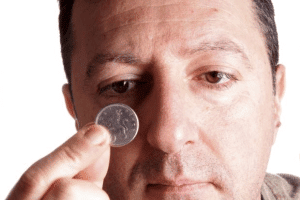 Let us consider an area which is a real community and personal problem for many people. That is the world of gambling. Specifically allow us to explore the world of the Poker Machine (or slots). What is it about the world of risk and probability that people just do not seem to appreciate? By definition the Poker Machine is designed to keep more than it hands back. Such is a very simple concept to understand, or at least at a logical level we would have thought so. It is absolutely simple. The longer you sit at a Poker Machine feeding it, the more you are going to lose! The entire process is engineered that way. Having said that there is a population within our communities who truly believe they are “lucky” at these pieces of exceptionally engineered theft devices. So why is it so many do not even consider that they are seriously giving their money away.
Let us consider an area which is a real community and personal problem for many people. That is the world of gambling. Specifically allow us to explore the world of the Poker Machine (or slots). What is it about the world of risk and probability that people just do not seem to appreciate? By definition the Poker Machine is designed to keep more than it hands back. Such is a very simple concept to understand, or at least at a logical level we would have thought so. It is absolutely simple. The longer you sit at a Poker Machine feeding it, the more you are going to lose! The entire process is engineered that way. Having said that there is a population within our communities who truly believe they are “lucky” at these pieces of exceptionally engineered theft devices. So why is it so many do not even consider that they are seriously giving their money away.

If we look at another area of gambling, the roulette wheel, what do we see. We see people coming up with all sorts of strategies to fool themselves into thinking that the risk has been modified. For example, some people always sit in a certain spot relative to the wheel, some people wear special items of clothing etc., some people only drink certain concoctions whilst playing, some people only play during certain hours of the day. I am sure no matter what permutation you can come up with we would find someone who believes that this is their special method for increasing their luck. Or to put it another way reducing their risk of losing.
Now here is the scary bit. The majority of these people are quite intelligent functional human beings who are successful in many aspects of their lives.
What these examples demonstrate is how poor we are at understanding risk. Let me come back to the question of the dice. Each and every time you throw the dice the odds remain 1:6 against you. What your brain really tries to tell you though are things like “it’s about time”, after you have thrown eight times and the six finally came up. How is that any different to sitting in front of the slot machine for two hours with thoughts such as “only a bit longer and I’ll hit the jackpot”.
For the most part we seem generally designed to minimize risk. We believe that that the more we are exposed to something the less likely that something shall cause us any concern.
I propose that the fundamental basis for approaching risk in our workplaces is significantly flawed.
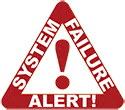 Almost all global jurisdictions promote the standard risk matrix of probability/ likelihood verses injury/outcome. At the beginning of this commentary I suggested that we do not do the probability/likelihood very well. Indeed, we are generally pretty awful at it. If we accept that to be true it puts at risk the entire risk appraisal model.
Almost all global jurisdictions promote the standard risk matrix of probability/ likelihood verses injury/outcome. At the beginning of this commentary I suggested that we do not do the probability/likelihood very well. Indeed, we are generally pretty awful at it. If we accept that to be true it puts at risk the entire risk appraisal model.
If I just also suggest to you that the Transformational Safety accident causation model, which speaks to the lateral movement of protective barriers, also theoretically tells us that the “risk” is actually a dynamic process anyway. What we need to be doing is equipping ourselves, and our people, with skills and strategies to understand the dynamic nature of risk for the sole purpose of significantly improving their personal risk competency.
To not do so places us all at the mercy of Risk Tolerance. Not something I wish to confront again. No more Titanium please. If you would like to reas a little more about my personal journey through risk, just click here.

Ricky, Atlanta
![]()
“I was fortunate to attend Transformational Safety’s Anatomies of Disaster Program. This was amongst the most powerful two days I have ever spent in a room. From the outset David Broadbent set the scene by dedicating the program to the late Rick Rescorla – the man who is credited with saving over 2700 lives on 9/11. Throughout the two days David would often respectively reflect and remember those who had died, or been injured, in the disasters we explored. He would say, and I will never forget, “…we must always remember those that lost their lives lift us up into the light of understanding”. I learnt so much. HRO, Resilience Engineering, Critical Incident Stress Management (CISM) and more. Those of us who were there are still talking about it…… Thankyou David


